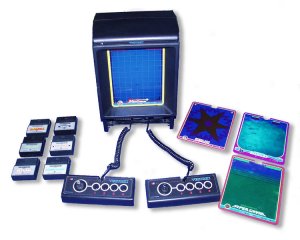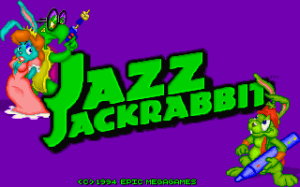Previously in the series: The Playstation and Me: David Jaffe, Part 1, The Playstation and Me: David Jaffe, Part 2, The Playstation and Me: David Jaffe, Part 3, The Playstation and Me: Ted Price, part 1, The Playstation and Me: Ted Price, part 2, The Playstation and Me: Ted Price, part 3,The Playstation and Me: Evan Wells, Part 1, The Playstation and Me: Evan Wells, Part 2,The Playstation and Me: Evan Wells, Part 3, The Playstation and Me: Scott Rohde, Part 1, The Playstation and Me: Scott Rohde, Part 2, The Playstation and Me: Scott Rohde, Part 3
Sony’s a global company, one that dominated the world of consumer electronics for decades, and the appearance of the first Playstation extended its reach like never before. So, it’s good that my last conversation was with Hermen Hulst. The managing director and co-founder of Guerilla Games claims Amsterdam as his home and he was able to give me a glimpse of the way that Playstation spread out in Europe. Hulst’s story differs in other ways from David Jaffe, Ted Price, Evan Wells and Scott Rohde, too. He didn’t grow up wanting to be in the games business and came in through the business side and not via the creative ladder.
Also, while I asked everyone in the Playstation and Me series about stereoscopic 3D game development, Hulst’s the only one who’s actively doing it. Guerilla’s Killzone 3 will be the AAA test case for a hardcore 3D gaming experience when it comes out next year and the Dutch dev studio’s been getting its collective hands dirty with the tech for many months now. Hulst brings the team’s learnings about 3D and much more to our talk. Read on.
So let’s get started in terms of you as a gamer before you got into the business. What was your interface with video game systems? When did you decide you wanted to do this as your career? I’m particularly interested in your account because everybody I’ve spoken to so far has been on the American side, so there’s some commonality in their experiences. And I’d love to hear what was different for you growing up across the pond in Amsterdam.
 Sure. Well, let’s see, where did that start? My mom had a toy store. So she had, back all the way, the Vectrex on the counter. I must admit that after hours in the shops–which they close here at 6:00, so even for a kid, there’s a good chunk of time before bedtime. I picked it up and worked on the high scores a lot. We also had the early systems. We had Pong at home and it was kind of easy for us because of my mom’s business. So I had early access to the early machines. And I played them a lot. But I kind of went on and off. I didn’t touch games for a number of years. And picked it up here and there in my student years.
Sure. Well, let’s see, where did that start? My mom had a toy store. So she had, back all the way, the Vectrex on the counter. I must admit that after hours in the shops–which they close here at 6:00, so even for a kid, there’s a good chunk of time before bedtime. I picked it up and worked on the high scores a lot. We also had the early systems. We had Pong at home and it was kind of easy for us because of my mom’s business. So I had early access to the early machines. And I played them a lot. But I kind of went on and off. I didn’t touch games for a number of years. And picked it up here and there in my student years.
But my first professional experience was when, during my student years, I landed an internship with Ubisoft on the marketing side. They were just setting up in the United States. It was an opportunity for me to really delve into understanding what makes great games, because I was running focus groups on them, writing marketing plans for them. That was in the years where they launched the first Rayman, so that was ‘94 we’re talking now. So, I was in business school, and I spent some time at Ubisoft.
Then I left the industry again and I worked as a strategy consultant doing serious stuff. I worked with Philips Electronics in strategic marketing. And I was always working on the technology and media side of things. I was working on things like video conferencing and interactive television. But I always enjoyed the interactivity, the turning images to graphics part, the gameplay and the technology. So, that sphere always intrigued me. I really enjoyed that working experience at Ubisoft. I was doing some other things. I guess I kind of told myself that I should enter a profession that was serious, because games were still very young at the time.
But I enjoyed it so much that when this opportunity arose in 2000 to set up Guerrilla Games–by merging a number of small studios into an organization that had a chance to really compete–that kind of was perfect for me. Because it brought back my business skills, my love for technology, and my past with games.
I am hearing some divergent things in your story at least in compared to what is more typical with people who work in the video game industry. I’m hearing that you came to the games business as an adult and decided to make a career as an adult. It’s in direct opposition to somebody who has these deeply ingrained childhood experiences, pushing them into becoming a game designer. And that’s really interesting, because I imagine you must have been a lot more clear-eyed about what your chances were when you finally decided to form the conglomerate that became Guerrilla Games. So who were the development studios that you brought together for the collective?
There were three. The first one I should mention was Orange Games, and that was a studio owned by someone named Arjan Brussee, and he’s currently our development director. So a lot of the old crew is still here.Orange Games worked in the mid ‘90s on a title called Jazz Jackrabbit. It was pretty popular at the time. Arjan worked on that with Cliff Blezsinski. So there’s some connection with other industry figures.
Then there was another studio called Formula, which later became Lost Boys. The main guy there was Mathijs de Jonge, he’s currently game director on Killzone 3. So that’s another one of the guys that’s basically been with us for 10 years. A lot of hand-held stuff in the beginning. Lots of Game Boy titles and much smaller games. And the final one was, it’s not a name you would have heard of, it was a company called Digital Infinity. They were working on title called Knights . It was a platform game.
Oh, Nights, the Dreamcast game?
Actually no, it was a totally different title and we had to can that in the early days. But you were talking about entering the industry as an adult. The point you make about a different decision-making process is probably right. Because when I started with Guerrilla Games, back in late 2000 or early 2001, part of my role was to not only take a creative view on things, but also, make sure it was going to evolve into a proper business. And back then we were, I think, developing three, four different games in different genres on different technologies at the time. Streamlining that, making sure that we actually had a chance to compete in something serious. That definitely comes with being an adult, right?
Right. Right. You can’t afford to fly by the seat of your pants.
You can’t be 30 people and compete on handheld, on PC, and on all the game consoles that were out there and in different genres. If you compare to what we’ve been doing recently– a very large team, in one particular genre, working on one franchise–it’s almost the opposite turn that we took there.
How big is the team working on Killzone 3?
We are, the core team, about 135 folks right now. It’s a massive game with a lot of detail in it, with a whole lot of features. It’s a huge multiplayer game, it’s a massive single-player game. We’re supporting 3D, Move, a whole lot of stuff in there. And it’s on top of that even a whole bunch of freelancers and outsourcing staff.
Sure.
Right now, everyone’s simply locked in at this stage in the project.
We’ll get to the Killzone 3 stuff in a bit. So, Guerrilla games forms in 2000. When did your relationship with Playstation start?
Actually very early. We signed a preproduction contract for a shooter game called Marines that evolved into a contract for Killzone. And that was not day one but day two basically. Day one was us working on the technology. We won that contract by showing a great technology demo. I actually talked about all of this for the first time at a keynote at GDC Europe last month. So the game was called Marines. And on the back of that, we had a preproduction contract that we landed early 2001, and that was the beginning of the relationship between Guerrilla and Sony and also the coming into existence of the Killzone franchise.
So that was right at the launch of the PS2 or right before it?
Yeah, just about that time, really. Just after, actually.
So when you had gotten your hands on the first Playstation for the first time, where were you in your relationship with the industry? You were working in the other business-type jobs? You were more a casual observer at that point?
So me personally, the game we launched with Ubisoft was Rayman, amongst others, for PS1. Right?
Yes.
So that’s when Playstation sort of made gaming more accepted outside of the area of the PC-addict in the boys’ room. Or being a sort of a handheld kiddie vehicle. It became more accepted as a grown-up media, or as a cool thing to do if you will.
The people I have spoken to on the American side said the Playstation was the first console after, say, Sega’s early systems, to really capture the public consciousness, and grow it up a little bit. Was there a similar shift in Europe that you can speak to from your own personal experience?
I definitely think so. I think Playstation 1 did exactly that, and Playstation 2 did it again. And what I mean by do it again is take the industry and move it from two big sections, one of which is children’s games, and the other one is what I call more the attic-room, the boys’-room PC kind of culture. The background of Sony, as a consumer electronics company, meant they had a really great knack for making it more mass market and a cooler–the word cool I think is very important there–experience. Playstation made it easier for people to tell to others that, they actually play video games, and it was OK somehow. I think with Playstation 2, in the years that I worked, or the early years, the fact that it was a DVD player, I think, really, really helped conquer that position under the television, and then in the living room.
 I think that was a big shift. It was a good reason for a spouse. Typically, the crowd was boys back then. Persuading some space under the television in the living room. It was, frankly, a very nice looking machine, that PS2.
I think that was a big shift. It was a good reason for a spouse. Typically, the crowd was boys back then. Persuading some space under the television in the living room. It was, frankly, a very nice looking machine, that PS2.
That evolution already started with the PS1, that it was not nerdy looking, not scary looking. Friendly looking: that round shape and then that cool sort of square–that little black box that Sony’s been good at. So I think that is a massive, massive transformation. It’s image but it’s also performance and it’s also the multifunctional nature of the machine. All of those elements jointly, they really helped push the industry towards a much more accepted status than it was back in the early days where my American colleagues already talked to you about.


